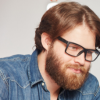Blog Ideas
Article/blog ideas that you can use to generate more traffic, leads, and sales for your business.
ブログ、広告、電子メール、Web サイト用に SEO に最適化された独自のコンテンツを 10 倍の速さで作成し、作業時間を節約します。



コンテンツを生成するには、いくつかの簡単な手順に従う必要があります。 AI を使用して時間を節約しましょう。
コンテンツ作成テンプレートを選択します。あらゆるニーズに対応できる複数のテンプレートが用意されています。
コンテンツの詳細な説明を入力します。 AIにあなたの欲しいものを伝えてください。
ユニークな高品質コンテンツを入手してください。コンテンツは盗用されておらず、どこでも使用できます。
60 を超えるコンテンツ作成テンプレートを使用して、必要なコンテンツを生成します。
Detailed article outlines that help you write better content on a consistent basis.
Write a social media post for yourself to be published on any platform.
AI チャットボットは人工知能を使用して質問や会話を理解し、応答します。チャットボットは、パーソナライズされたサポートを即座に提供できるため、非常に役立ちます。
さまざまな業界に特化した多様なチャットボットを提供しています。の。人間関係アドバイザー、ビジネスコーチ、モチベーションスピーカー、ライフコーチ、弁護士、医師など
今すぐチャット

ここでは、当社の製品に関して最もよくある質問のいくつかに対する回答を提供することを目的としています。
Lorem ipsum dolor sit amet, consectetur adipiscing elit. Integer vestibulum rhoncus libero ut condimentum. Etiam pretium diam odio, vitae varius dolor tristique quis. Fusce sodales dolor commodo iaculis vehicula. Maecenas laoreet leo massa, ut sagittis nulla pellentesque vel. In hac habitasse platea dictumst. In rhoncus vehicula tristique. Fusce auctor iaculis ornare. Duis condimentum est non massa lobortis, quis pellentesque nisi pulvinar.
AI is the superset of various techniques that allow machines to be artificially intelligent. For an analogy, think of a Russian nesting doll: machine learning is a subset of AI, and deep learning is a subset of machine learning
Machine learning refers to a machine’s ability to think without being externally programmed. While devices have traditionally been programmed with a set of rules for how to act, machine learning enables devices to learn directly from the data itself and become more intelligent over time as more data is collected.
Deep learning is a machine learning technique that uses multiple neural network layers to progressively extract higher level features from the raw input data. For example, in image processing, lower layers of the neural network may identify edges, while higher layers may identify the concepts relevant to a human such as letters or faces.
An AI assistant is a program powered by machine learning that can respond to you, provide information, anticipate your needs, and perform tasks at your request. While these assistants are most commonly thought of in terms of smartphones and smart home speakers, they can exist in a range of devices and will become common in XR glasses, home appliances, connected cars, and more. With the 5th generation Qualcomm® AI Engine on Qualcomm Snapdragon 865, we’re enabling AI assistants with advanced capabilities to enhance user experiences while meeting the power and thermal constraints of mobile devices.
A: AI is a powerful tool for addressing a variety of challenges, such as voice translation or wireless channel estimation, that are difficult to model or solve with traditional methods. For the end user, AI seamlessly offers enhanced experiences, personal assistance, and automation of repetitive tasks. In addition, AI can make devices more energy efficient and allow us to interact with them in more convenient ways, like with an always-on voice user interface.
A: The biggest challenges AI models face are how to be more power efficient, how to learn from less data, how to learn from unlabeled data (unsupervised learning), and how to generalize across multiple tasks. The industry is also focused on making AI unbiased and explainable, such that we know how it works, where it fails, and how to quantify confidence levels. For example, we want to understand how the AI used for autonomous driving is deciding how to drive safely on a road under various environments and weather conditions.
A: AI is currently benefiting from more data and more efficient hardware, as well as better AI tools and networks/algorithms. Advancements in state-of-the-art accuracy for various tasks happen regularly due to the collaborative nature of the AI research community through papers and workshops. For example, Qualcomm AI Research has published many papers in the areas of power efficiency, personalization, and efficient learning. These advancements are being applied in more areas, integrated into different types of devices, and enhancing our user experiences.
A: When there’s bias in the data set that trains an AI model, the model will contain the same bias. A way to address this bias is by collecting robust and diverse data. For example, in distributed learning on smartphones, you may want to sample data from different geographies and demographics. If bias is noticed in algorithms, the data should be examined to determine whether new data should be added.
A: Computer vision involves generating feature detectors, which traditionally have been hand-crafted by humans. With the help of large data sets of labeled images or videos, machine learning, and specifically deep learning, can learn these feature detectors automatically and more accurately than humans.
A: AI is running on your phone behind the scenes for a variety of use cases, inferencing neural networks on your device to help you take better photos, understand a different language, identify music, and assist with gaming. This is also known as on-device AI. AI can also be used on mobile phones for real-time language translation, Qualcomm Technologies is one of the firsts in the industry to introduce this feature It also improves user experiences on Snapchat, making lenses smoother and faster. Beyond that, cameras on mobile phones also use AI for low-light photography, super-resolution, best shot, scene settings, switching between camera lenses, and more.
何千ものマーケティング担当者、代理店、起業家が、コンテンツ マーケティングを自動化および簡素化するために QuickAI を選択しています。








